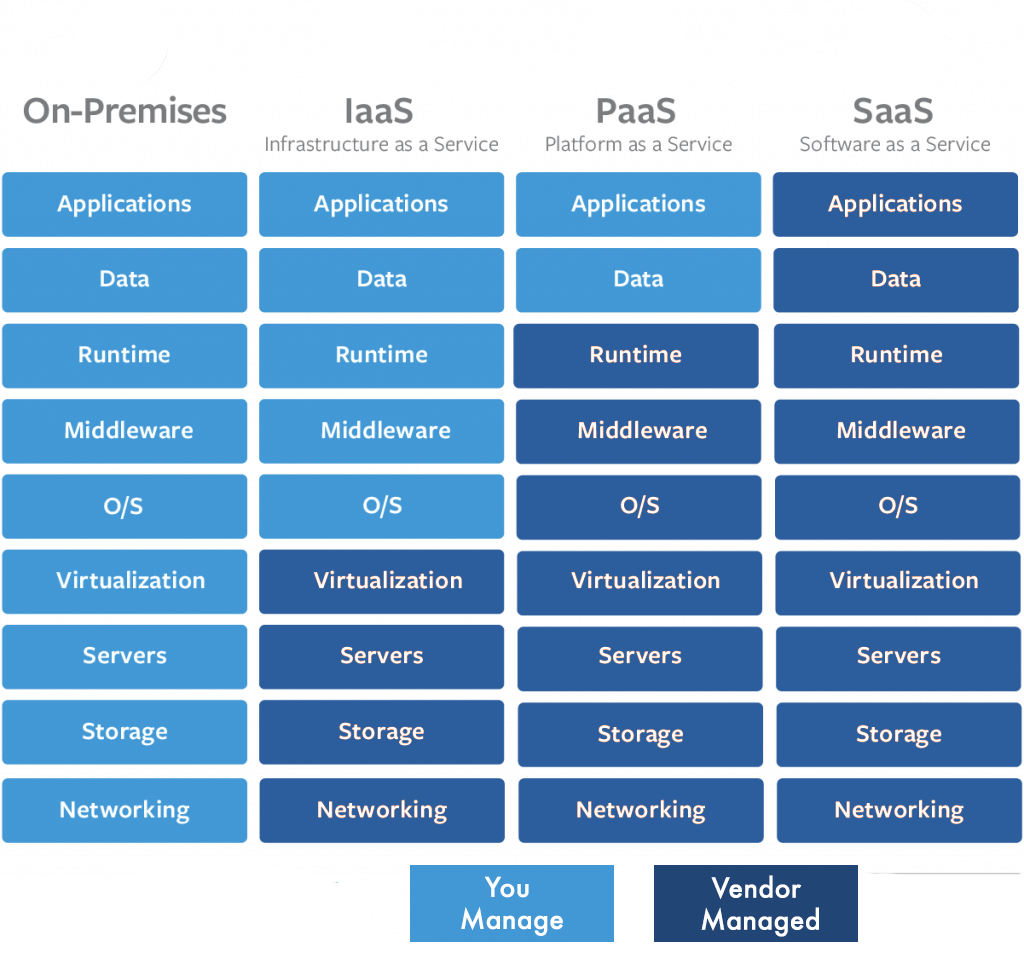Beyond cloud technology, our highly secure data centres are hosted throughout the far reaches of outer space for maximum geographic coverage and performance at the speed of light.
It’s true – there are some big advantages to outsourcing your infrastructure and data management to a qualified ‘as-a-service’ provider. Cloud services have come a long way, offering highly scalable and secure infrastructure and data management solutions that can help operationalize budgets and reduce or eliminate the need for local hardware and IT services. However, there are pros and cons related to performance, flexibility, and cost that should be carefully considered when determining whether a move to the cloud is right for your organization, and if so, which models will deliver the best results and ROI:
- Differing service models: As if there weren’t enough acronyms in the healthcare world already – Cloud adds its own collection of ‘aaS’ (as-a-service) to the pile. It’s important to understand the primary service models offered by cloud vendors so you can choose the model that best fits your organizational needs. Infrastructure and Platform as-a-service (IaaS, PaaS) are more fundamental. IaaS provides the basic virtualized infrastructure for the storage and processing of data, whereas PaaS adds operating system, middleware, and runtime environments. Both can reduce the amount of physical hardware and IT expertise that is required on-premise. This model is great if your needs are focused on supporting data growth, data mining, or business continuity. Software-as-a-Service (SaaS) typically represents a more comprehensive service model, delivering subscription-based business solutions that are fully vendor hosted and managed. This fully operationalizes your IT budget, and greatly reduces your in-house IT burden, however the trade-off is typically a reduction in customization opportunities. Which model would work best for your organization entirely depends on the degree of control you wish to exercise over your own infrastructure, software configuration, and workflows.

- Maturity of your IT organization: The scale and maturity of your in-house infrastructure and depth of expertise held by your IT team are two key factors to consider when thinking about a move to the cloud. Have you made significant investments into your own data centres and leading-edge infrastructure? Do your operations require sophisticated and customized IT solutions to support complex and varied clinical and operational workflows? If the answer is no, cloud could certainly be a viable option. However, if you answered yes to one or both of these questions then a full-blown cloud solution may not be right for you. Instead, you may wish to consider a hybrid cloud solution that leverages your current investments and affords your IT team full autonomy over your system architecture and configuration while augmenting it with additional secure flexible storage and compute resources and replication alternatives.
- Growth pace and predictability: Cloud environments are more dynamic and elastic than traditional on-premise hardware infrastructure – which is one if its biggest advantages. Cloud environments can flex and scale storage and compute resources to accommodate large and unpredictable swings in data and user volumes. If your organization’s infrastructure is struggling to keep pace with your growth or usage patterns, then cloud services might be right for you. However, factors such as location, available network bandwidth, and network latency can impact the performance of applications hosted in the cloud. As well, not all vendors have optimized their software solutions to operate efficiently in a cloud-hosted environment – which can not only effect performance but can also lead to surprisingly high service fees. For instance, ‘chatty’ applications that make superfluous round trips to cloud-based servers and databases can greatly increase network service fees, while their performance can be significantly and adversely impacted by network latency. Before boarding that rocket ship to the cloud, make sure you thoroughly vet your vendor’s technology architecture and test system performance and connectivity across representative use cases and locations to ensure it will meet or exceed your expectations.
Love the logo? Contact us for details on how to order your limited edition tee.

Are you in the market for a cloud-based imaging solution? We can help you separate truth from fiction and select a strategy, technology, and vendor that will best fit your organizational capabilities and needs. Contact us to setup a meeting at RSNA 2019.
Leave a Reply